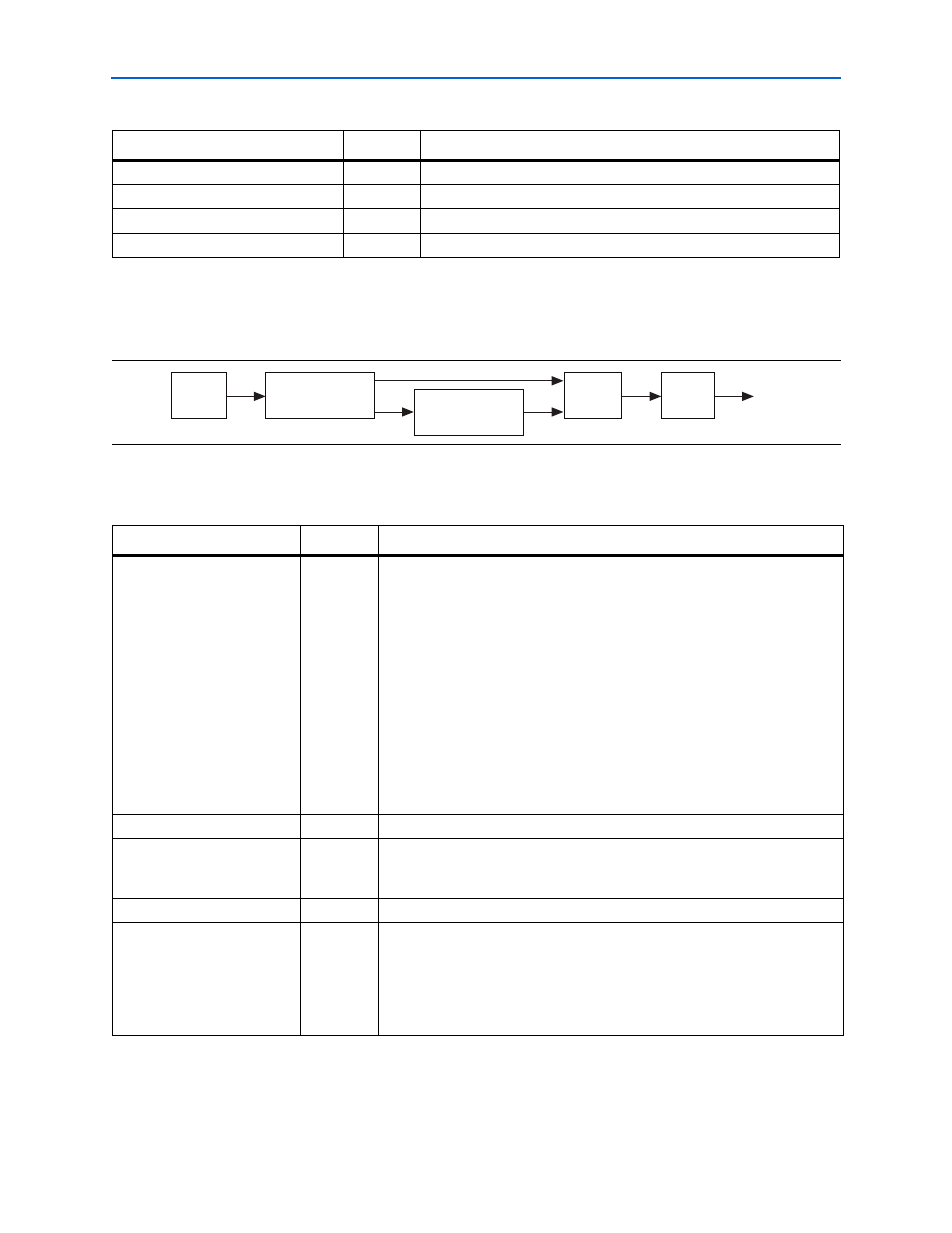Resynch_clk, Ster (refer to, Figure 3–19 – Altera DDR SDRAM Controller User Manual
Page 65

Chapter 3: Functional Description
3–29
Interfaces & Signals
© March 2009
Altera Corporation
DDR and DDR2 SDRAM Controller Compiler User Guide
shows the DDR and DDR2 SDRAM controller local interface signals.
write_clk
Input
Shifted clock that center aligns write data to the memory.
dqs_ref_clk
Output
Stratix DLL reference clock output.
fedback_clock_out
Output
Fed-back clock output.
stratix_dll_control
Output
Disables the Stratix DLL reference clock during reads.
Note to
(1) This signal only exists on the custom variation when a dedicated clock phase is required, otherwise the connection is made inside the custom
variation.
Figure 3–19. Circuit for resynch_clk_edge_select
Table 3–7. System Signals (Part 2 of 2)
Signal Name
Direction
Description
Capture
Register
Multiplex
local_rdata
Pipeline
Register
Extra
Resynchronization
Register
Resynchronization
Register
Table 3–8. Local Interface Signals (Part 1 of 2)
Signal Name
Direction
Description
local_addr[]
Input
Memory address at which the burst should start. The width of this bus is sized
using the following equation:
For one chip select:
width = bank bits + row bits + column bits – 1
For multiple chip selects:
width = chip bits + bank bits + row bits + column bits – 1
The least significant bit (LSB) of the column address on the memory side is
ignored, because the local data width is twice that of the memory data bus
width.
The order of the address bits is set in the clear text part of the MegaCore
function (auk_ddr_sdram.vhd). The order is chips, bank, row, column, but
you can change it if required.
local_be[]
Input
Byte enable signal, which you use to mask off individual bytes during writes.
local_burstbegin
Input
Avalon-MM burst begin strobe, which indicates the beginning of an Avalon-
MM burst. This signal is only available when the local interface is an Avalon-
MM interface and the memory burst length is greater than 2.
local_read_req
Input
Read request signal.
local_refresh_req
Input
User controlled refresh request. If User Controlled Refresh is turned on,
local_refresh_req
becomes available and you are responsible for
issuing sufficient refresh requests to meet the memory requirements. This
option allows complete control over when refreshes are issued to the memory
including ganging together multiple refresh commands. Refresh requests take
priority over read and write requests unless they are already being processed.
